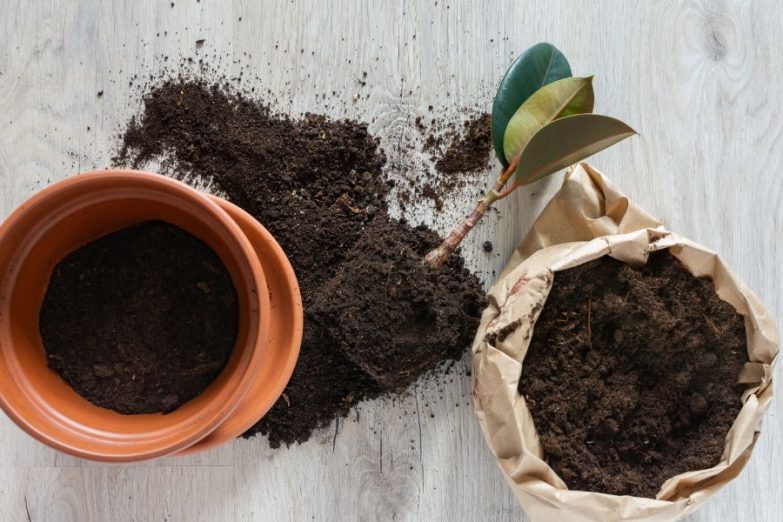Peat moss is one of those products in gardening that most everyone is familiar with. It’s used as a growing media in containers and pots, and a soil amendment for garden soil. For a long time, it’s been a staple product in gardening but is coming under scrutiny lately for sustainability issues, prompting people to look for alternatives to peat moss to use.
What are the alternatives to peat moss? There are plenty of peat moss alternatives, including coconut coir, compost, bark or wood fibre, pine needles, leaf mold, and manure. Each has pros and cons, but are ideal alternatives to peat moss in many situations.
To determine the best peat moss alternative for your situation, it’s helpful to understand what peat moss is, its pros and cons, and the pros and cons of suitable replacements. Once you have a better understanding of the different products you can decide which is a suitable alternative for your needs.
What Is Peat Moss?
First, we should talk a little about the difference between peat and peat moss as the two terms are often tossed around interchangeably. While they are related there is a slight difference between the two.
Peat forms in marshy wet areas as layers of partially decayed plant matter accumulate to form a dense, fibrous material that is highly absorbent.
Peat moss is a specific type of peat, formed in areas with a high concentration of sphagnum moss. So peat moss is peat, but not all peat is peat moss.
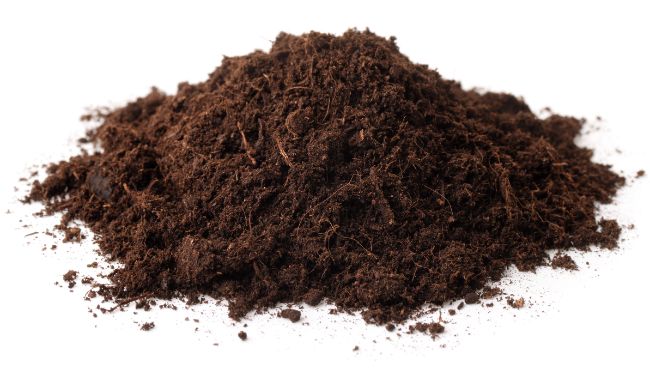
Benefits Of Peat Moss
In the 1940s peat moss found its place in horticulture, after being used for years as a fuel source. Due to a sizeable list of benefits, it is one of the most widely used types of growing media.
- Peat moss holds an incredible amount of water yet drains freely. Peat mosses can absorb and retain up to 25 times their dry weight in water; this is more than natural sponges can hold. On the upside, any excess water quickly moves through the material and drains out.
- They have an acidic pH, ranging from 3.5 to 6, on average. This makes peat moss a good choice of growing media for acid-loving container plants and can be used as a soil amendment to lower the pH of the soil.
- They are lighter in weight than topsoil. After harvesting and drying, peat moss weighs approximately 25 pounds per cubic foot. For reference, a similar volume of topsoil weighs about 40 pounds.
- When dried the resulting product is springy and resists compaction, keeping plenty of pore space in the root zone.
- As it forms in low oxygen conditions it doesn’t contain bacteria, fungi, weed seeds, or harmful chemicals like other growing media might. Its sterile nature makes it a fantastic product for starting seedlings.
- It doesn’t naturally have much mineral content but due to its structure, it holds onto positively charged nutrients, keeping them available for plant uptake.
- Peat moss is easy and clean to work with. Unlike other materials, it doesn’t leave dust or blow around.
Drawbacks of peat moss
Using peat moss does come with some disadvantages. These disadvantages are key reasons why people are looking for alternative products.
- Peat moss forms really slowly compared to other materials. This makes it so some consider it a non-renewable resource, which is why its use often comes under fire.
- The harvesting process is more labor-intensive than others, making peat moss more expensive to purchase.
- The bogs in which peat moss form are nutrient-poor because of high water tables and lack of nutrients. Due to this, the resulting peat moss is low in nutrients too.
- As mentioned above it does have a slightly acidic pH. This can be good for some plants, but for others, it’s a big drawback.
- It doesn’t work well as a mulch because it is so lightweight. When it dries out it is easily blown about by the wind.
The 6 Best Alternatives To Peat Moss
I’ve chosen 6 of the best alternatives to peat moss that you should consider. Each has pros and cons which you will need to consider, but each can make a wonderful alternative to peat in the right circumstances.
I’ve also written an in depth guide to choosing and making houseplant soil. This will help you choose what to use alongside these alternatives to peat moss to build a fantastic soil for your plant.
Coconut Coir
Coconut coir was a popular gardening product back in the 19th century but fell to the wayside in favor of peat moss. At the time low-quality coir degraded quickly making it a hindrance in short-term growing situations. Recent manufacturing developments allow for the production of hardier products. As a result, coco coir is rapidly gaining popularity as one of the best alternatives to peat moss.
Coir is made from the brown and white fibers between the shell and the outer covering of a coconut seed. Coconut husks are first soaked in water to soften them. Once softened the fibers are removed from the husks and laid out to dry.
The drying time depends on the local climatic conditions (ie. temperature, humidity, etc.) and how thick the coir is. After it has sufficiently dried, the coir is formed into bales to be processed into usable formats.
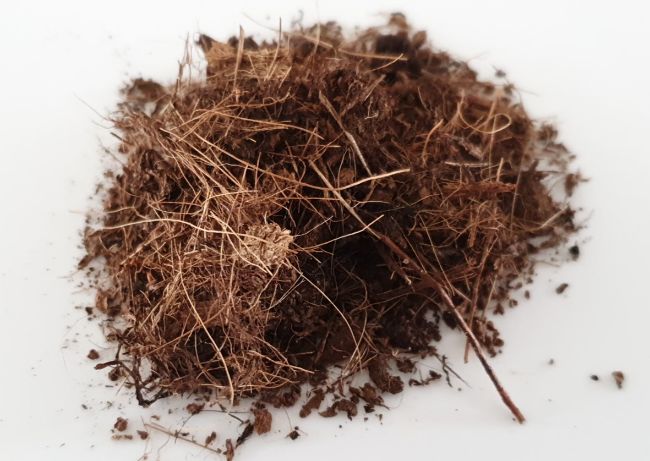
Pros
It has many positive aspects, with excellent water retention at the forefront, making it popular for container gardening, hydroponics systems, and commercial nurseries.
- Holds up to ten times its weight in water.
- Coconut coir breaks down slower than other organic materials. A slow decomposition rate equates to a product that doesn’t need to be replaced as often.
- It compresses to approximately 20% of its original size. This makes shipping cheaper than other comparable inert growing materials.
- With a mix of high water retention, good draining, and aeration it gives roots plenty of water while still having pore space for oxygen.
- Suitable for a wide range of plants with a pH level close to neutral (typically 5.2 – 6.8; a neutral pH also means it doesn’t affect nutrient availability.
- Natural antifungal properties in the coir may reduce fungal growth and damping-off.
- Natural lignins from the fibres promote the growth of beneficial bacteria in the root zone helping the roots take in nutrients, promoting plant growth.
- Plant growth and root health are promoted due to hormones and bio-stimulants.
- Easy to rewet if it dries out due to hydrophilic properties.
- Production of coir reduces waste generated by coconut processing, making it a highly available, renewable resource.
Cons
Like so many other gardening products, coconut coir does come with some negative aspects. Whether these negative aspects are large enough to rule it out as an alternative to you will depend on the application you need it for.
- Coconut coir is a fairly inert product, naturally. It is low in nutrients such as nitrogen, phosphorus, and potassium. To provide adequate nutrition for your plants, you’ll need to fertilize them regularly.
- A strong negative charge on the coir fibers can attract calcium, magnesium, and iron, and “tie” them up, making them unavailable for plant uptake.
- The high porosity of the coir is great for water and air movement through the root zone. Unfortunately, it means the product doesn’t have the same stable structure as others which hold plants upright. When used as a sole growing media it may be necessary to stake your plants or provide them with another type of support structure.
- If the coconut husks are soaked with saltwater to soften them, the end product can contain a high salt content. If these salts aren’t flushed out of the fibers at some point they will cause salt injury to your plants.
- Some lower quality products have chemical agents applied to them prior to packaging and shipping, to prevent bacterial growth. Not only will these products need to be soaked and/or rinsed thoroughly to remove these chemicals, but the treatment can also eliminate beneficial organisms that positively contribute to plant growth.
Compost
Known by many as “black gold” the illustrious compost is another staple gardening product. Compost is a rich soil amendment made from the breakdown of yard and kitchen waste by microbes; it is composed of organic material and chocked full of beneficial microbes and nutrients.
Compost is commonly mixed with other ingredients to create commercial potting soils or is used as a soil amendment to help improve the structure, water holding capacity, and nutrient content of garden soil.
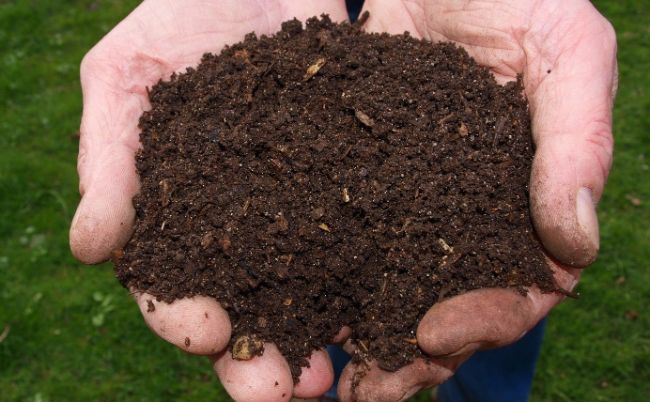
Pros
The benefits of turning waste into compost and then using it for gardening are no secret, especially if you’ve spent any time around someone who loves to garden.
- Reduces the amount of waste that ends up in landfills. In turn, less waste in landfills leads to a decrease in greenhouse gases that are produced as landfill waste breaks down. You can contribute to environmental sustainability with a pile or a bin in your yard, composting your lawn and garden waste and even kitchen scraps.
- There is little to no cost associated if you take on the project yourself and compost your own scraps. Cheap (or free) = huge benefit.
- If you DIY your own compost you will know exactly all of the items that have gone into your compost pile.
- Plentiful nutrient content in the finished compost increases soil fertility and reduces the need to apply chemical fertilizers to your garden.
- The increased organic matter content in the soil or potting mix improves the overall soil structure, improving both water infiltration and retention.
- Increases beneficial microbes in the soil that improve the root structure of plants, leading to stronger, healthier plant growth.
Cons
Compost does have some drawbacks too, which must be considered when looking at it as an alternative for peat moss.
- Compost must be “finished”, meaning it has gone through the entire decomposition process and there is no waste material left to break down.
- It shouldn’t be used as the sole growing media in containers, but rather in a mix where the compost makes up no more than one-third of the total composition. Compost is too heavy and compacts when used alone.
- Over time all of the nutrients are used by plants and the organic material breaks down, so it needs to be replaced every couple of years.
- The DIY progress is time-consuming, depending upon the method you choose to follow. Materials need to be added in the correct ratio and the pile needs to be turned periodically (labor-intensive) to make sure decomposition is progressing.
Bark Chips And Wood Fiber
Bark chips and other wood-based materials such as sawdust make potential alternatives to peat moss. They’ve been used since the 1950s in commercial potting mixes to add organic matter and enhance water retention.
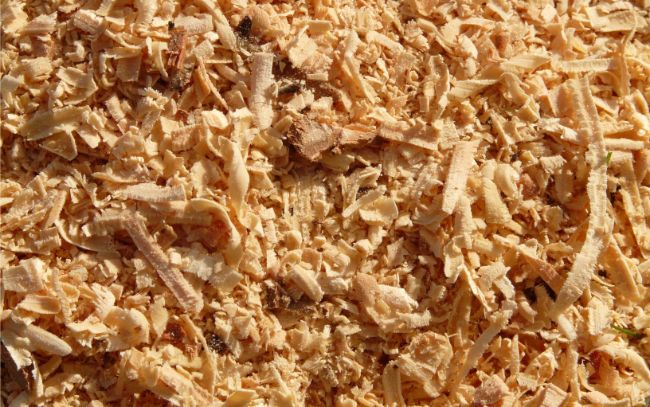
Pros
People have been adding wood products to their gardens for a long time, perhaps much longer than before the use of peat moss or coconut coir became popular.
- Add organic matter to the soil or potting mix, “opening” it up for better air and water movement.
- Wood products are inexpensive to purchase.
- They are often sourced from waste wood at sawmills or provided from landscape companies as they chip/shred trimmed materials from projects, making wood products a highly renewable resource.
- If you have a large lawn or property with many trees, an investment in a chipper/shredder means you can easily create your own.
- Many municipalities have free wood chips available to residents for use in their gardens.
Cons
Using wood products has some distinct disadvantages that need to be considered so you don’t cause damage to your soil.
- Wood-based products have high carbon levels. When you add them to your soil they will tie up usable nitrogen as microorganisms try to break the wood down. This requires you add extra nitrogen fertilizer to the soil to maintain an adequate ratio of carbon and nitrogen for plant growth.
- The size and shape of wood materials are highly inconsistent from batch to batch, especially if you source them from different places.
- May contain chemicals if the scraps come from wood that was treated; itis hard to know if this is the case or not when getting materials from lumber mills. Also, if plywood was turned into sawdust it may contain glue(s) you don’t want in your soil.
Pine Needles
Another alternative that has been used for many, many years is pine needles because of their availability. With evergreen trees gracing the yards of many homeowners they are easy to come by.
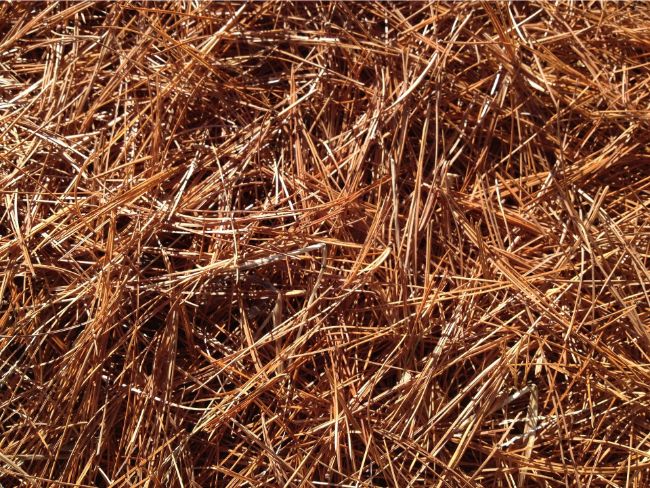
Pros
- Needles are acidic because of the tannic acid they contain, but when added to soil as an amendment, they don’t lower the soil pH as peat moss does.
- They are a renewable resource, one that is readily available for many homeowners at no cost.
- The structure of pine needles means they don’t compress easily helping to keep soil friable and maintain good porosity. This leads to better water and air movement through the soil.
- When used as a mulch the needles “knit” together to keep them from blowing away in the wind, creating a dense mat that is penetrable to water.
Cons
Yet again, pine needles have disadvantages to their use, just like all of the other products.
- Pine needles do not retain water, so they can’t help increase water holding capacity of either potting soils or garden soil.
- They are expensive to buy if purchased commercially.
- There is no nutrient value in them.
Leaf Mold
Leaf mold is simply leaves that have been left piled up, outside, and allowed to decompose or compost. While many times this is unintentional it provides gardeners with a product that has many advantages and uses in the garden.
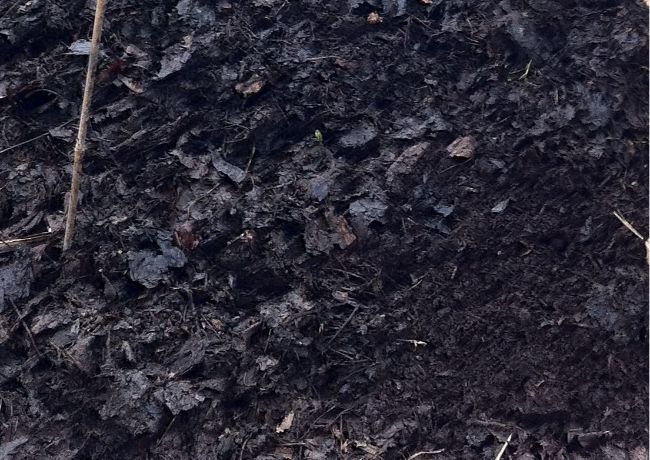
Pros
For some people, leaf mold is a great alternative to peat moss and one that is similar to compost yet takes very little work.
- Leaf mold greatly increases water holding capacity when mixed into soils. It retains an incredible amount of moisture, holding up to 500 times its weight in water.
- Inexpensive to use; most people have access to free leaf mold tucked in corners of their yard or perhaps a fall they rake up in the fall and left to overwinter.
- Easy to make. I’m not sure it can get much easier than this: pile up leaves and then let them decompose…after a while, you’ll have leaf mold.
- Plentiful supply makes them a highly renewable resource.
Cons
- Can be a source of weed seeds.
- Slow to break down. You should regularly turn your leaf mold to improve aeration and accelerate the breakdown process.
- Leaf mold tends to be slightly acidic, which won’t suit all types of plants.
Animal Manure
For those that have animals on their property, or live in close proximity to farms, animal manure may be one of the best alternatives to peat moss.
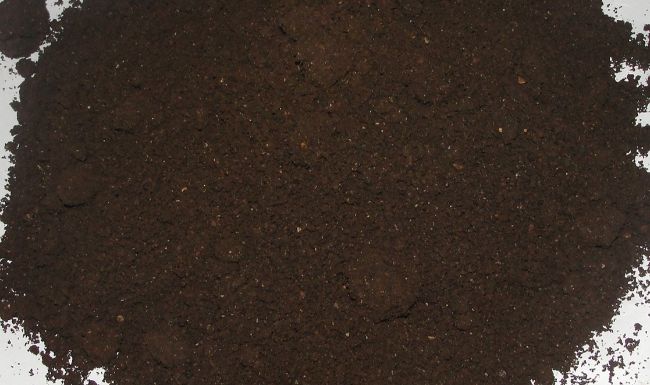
Pros
There are many reasons to opt to use manure as an alternative, other than if you can get it for free.
- A renewable resource that is easily accessible.
- The organic material in manure increases soil carbon.
- Improves beneficial microbes in the soil, aiding plant growth.
Cons
One of the biggest drawbacks of using manure as an alternative to peat moss is what many would consider the grossness factor. While that isn’t a true disadvantage, there are some important cons to consider when using manure.
- One of the easiest disadvantages to recognize is the smell. Even well-rotted, aged manure will maintain some of its distinct aromas.
- “Hot” manure can burn your plants. Manure that is somewhat fresh and hasn’t fully rotted contains a higher concentration of nutrients, nitrogen especially, and is more acidic causing damage to plants and inhibiting seed germination.
- The heavy material can compact down similar to compost, pushing oxygen out of the root zone.
- Finished manure can still contain weed seeds, pathogens, hormones and antibiotics from animals.

